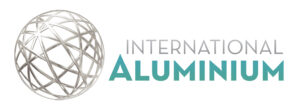ASI Chain of Custody Material Flows
Visualising ASI Chain of Custody Material Flows in the context of global aluminium supply and demand modelling
The ASI Chain of Custody (CoC) Standard sets out requirements for CoC Certified Entities to account for the flow of ASI Material along the aluminium value chain.
As part of ASI’s Data and Research program, CoC Certified Entities are required to report annually on CoC material inputs and outputs. This enables ASI to evaluate system integrity and support communication of aggregated and deidentified flows to interested stakeholders.
A Memorandum of Understanding between ASI and the International Aluminium Institute (IAI) enables the use of IAI global material flow modelling as a basis for visualisation of ASI material flows. An ISEAL Impulse Grant awarded to ASI in 2020 has facilitated the integration of the ASI and IAI models and data.
The final project outcome is a Sankey diagram visualising reported ASI CoC input/output data in the context of IAI’s global demand/supply modelling. ASI collects data and publishes the material flows annually.
We sincerely thank IAI for their collaboration and support, ISEAL for enabling funding and all reporting CoC Certified Entities.
The Sankey diagram shows nine model stages of the IAI’s Global Mass Flow model:
- Mining,
- Refining,
- Production,
- Fabrication,
- Manufacturing,
- Use,
- End-Of-Life Management,
- Scrap Management and
- Disposal & Incineration.
In the ASI Chain of Custody Standard, the model stages are comprised of:
- Bauxite Mining,
- Alumina Refining,
- Aluminium Smelting,
- Aluminium Re-melting/Refining (recycling),
- Casthouses and
- Post-Casthouse (covering the semi-fabrication and subsequent manufacturing stages of aluminium after metal is produced through primary smelting or recycling at a Casthouse).
All quantities of materials flowing between stages are expressed in units of mass of aluminium content of bauxite, alumina etc. (i.e., not total bauxite or alumina mass).
The ‘green stripe’ in the diagram represents the flow of ASI Material from CoC Certified Entities to other CoC and Non-CoC Certified Entities.
By hovering your mouse over the material streams in this interactive Sankey diagram, the ASI and Non-ASI Material quantities can be seen and compared. Using the timeline bar below the diagram, progressive changes in ASI Material flows can be explored.
To see the full IAI global material flow model, which visualises global and regional flows from 1962 to the present and scenarios to 2050, visit: https://alucycle.world-aluminium.org/public-access/.
Key points:
- The first green node (vertical stripe under ‘Mining’) represents ASI Bauxite production in the context of global supply and demand. Subsequent green nodes in each consecutive stage (refining, production, fabrication, manufacturing) represent inputs of CoC Material to that stage, shown in aluminium content of bauxite, alumina etc. (i.e., not total bauxite or alumina mass).
- The ‘green stripe’ in the diagram represents the flow of ASI Material from CoC Certified Entities to other CoC and Non-CoC Certified Entities. The green flowing into green, is the CoC Material moving between CoC Certified Entities. The green into gray, represents lack of demand for CoC Material produced, and sold as Non-CoC Material.
- The visualisation does not show total potential availability of CoC Material at each stage in a given year, as volumes of Positive Balance are not included.
- ASI Material is received, produced, transformed and transferred by Entities that are Certified against both the ASI Performance Standard and ASI Chain of Custody (CoC) Standard.
- Reported ASI Material may be a subset of an Entity’s total production.
- More details on CoC Material Flows for each year:
With these published data, ASI demonstrates a commitment to transparency and whole of supply chain uptake and impact. We look forward to building on this strong start and invite all interested supply chain actors and stakeholders to contribute to this momentum.
More info on:
Copyright

All data is licensed under a Creative Commons Attribution 4.0 International License.
Versioning
- Version 4, August 2023
SHARE THIS PAGE:




